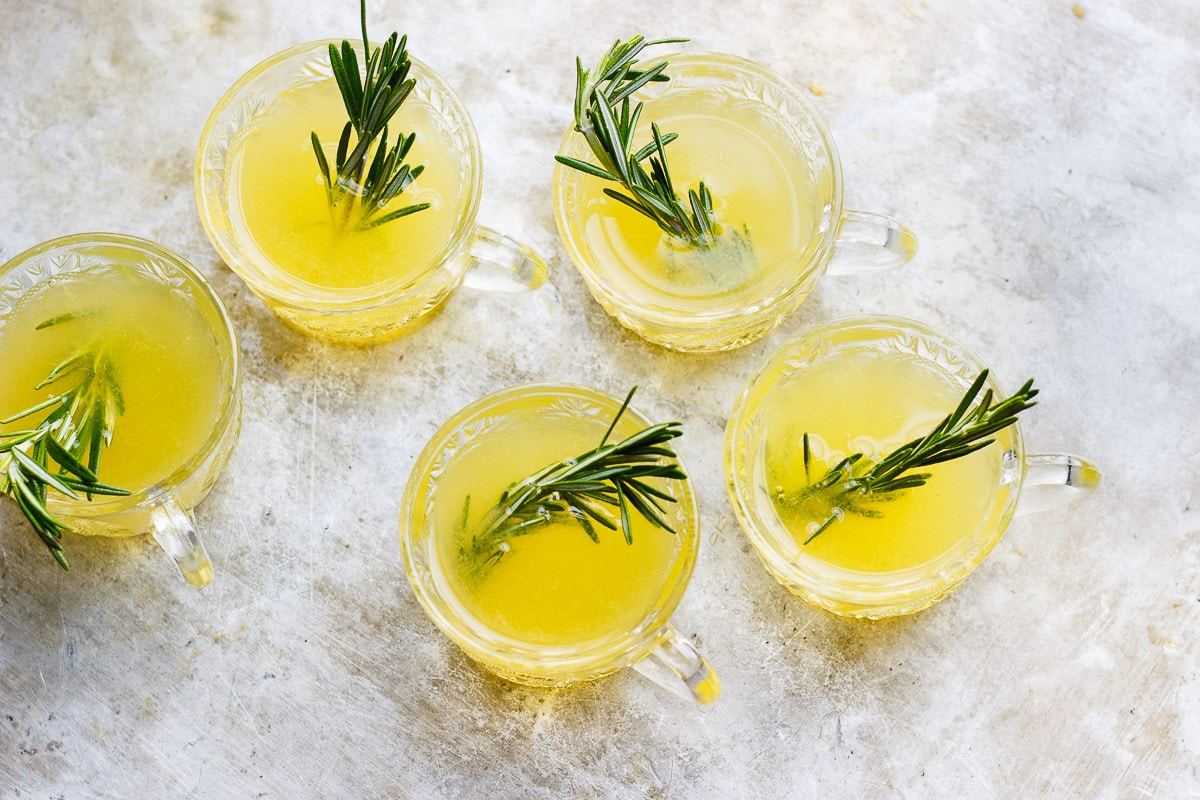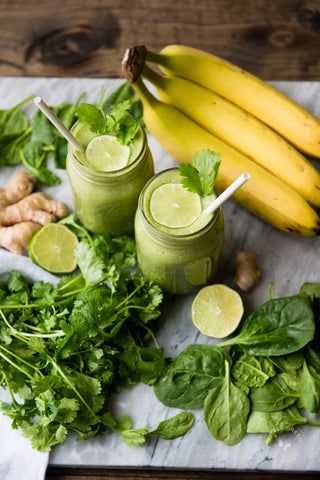
Dear Ruthy, I love fresh green herbs and I really crave them in almost every dish in the summer. I don’t have all that much time to grocery shop, so I typically buy lots of herbs to last about a week, sometimes a bit longer, and everything always wilt and even rots so quickly in the fridge. Do you have any storage tips?
Keeping Your Herbs Fresh
This is such a great question! Fresh herbs add flavor to any dish and also offer nutrients that your body craves. Unfortunately, keeping them fresh can be a challenge.
These tiny, tender plants tend to wilt quickly, leading some people to try freeze-dried herbs instead. While these will work in a pinch, they don’t come close to fresh basil on your margherita pizza or fresh oregano in your pasta sauce.
For years I couldn’t get my herbs to last very long, but after experimenting with numerous different techniques from washing and no washing, wrapping and bagging and no wrapping, I landed on what I’m convinced is the best way to store herbs so that they stay “fresh”. And they can last quite a long time, so I’m excited to share my tips with you!
We’ll cover the quick fixes for keeping your herbs fresh and also go over some cooking tips for how to incorporate more fresh herbs into your meals.
Understanding Fresh Greens
Firstly, let’s talk just a little “Fresh Greens 101” so that we understand why ultimately, washing herbs as soon as you buy them and proper wrapping is so important.
Why Prepping Helps Preserve Herbs
Why do we wash? Whether you can see it with your naked eye or not, there’s a fair bit of bacteria and other debris on the surface of your herbs. While washing won’t completely disinfect, it will remove a good amount of junk.
If you don’t give herbs a good rinse, all of that debris can cause pretty quick decay, shortening the lifespan of your herbs. Also, since too much oxygen exposure and the wrong balance of moisture will cause both hard herbs and soft herbs to wilt, dry out, or decay, the right wrapping technique will help control all of these variables. OK, let’s jump into it.
WASHING:
It’s really important to wash herbs before you use them. I find the easiest and most effective way is to fill a very large bowl with cold water, add in your herbs (stick to one variety at a time) and gently agitate, loosening the soil and any other debris.
Transfer herbs to a salad spinner and spin until relatively dry. Next, transfer to a clean kitchen towel or layer of paper towel and blot any residual moisture with more paper towel. Remove any leaves or stems that have already started to wilt or brown.
STORING:
This is where it gets slightly more complicated, as the way herbs tolerate cold and moisture depends on how hardy they are. So, we’re going to split them up into 3 categories:
Tender Herbs: Jar + Fridge

(Photo from Simple Green Smoothies)
This applies to how you can easily store parsley, dill, chives, mint, tarragon, and cilantro. These are thirsty herbs that don’t want too much oxygen, but storing them in a completely airtight container will cause them to wilt sooner. They have soft stems and leaves that wilt quickly.
Fill a glass jar with a couple inches of water, trim off the very ends of the stems and place in the jar. Cover the leaves with a plastic bag, seal the bag around the sides of the jar using a rubber band and store in the fridge. Herbs should last 2-3 weeks.
(I’ve never tried bending the stems over and sealing the jar with its lid and I’m not sure whether this would be too airtight, but it would definitely take up less space in the fridge. If you try it, let me know how that works out!)
Hardy, Tougher Herbs: Roll + Fridge

(Photo from Tending the Table)
This applies to herbs such as rosemary, sage and thyme. These are hardy herbs that have woody stems.
Slowly drizzle a little bit of water onto a clean kitchen towel or several sheets of paper towel (enough sheets so that when folded in half, you’ve got a kitchen towel size piece) until you have damp paper towels.
Spread the herbs on the towel so that they’re not piled on top of each other, and roll the towel from one end to the other like a log. Transfer the roll to a resealable or regular plastic bag, seal and store in the fridge (ideally in the high humidity drawer). Herbs should also last 2-3 weeks.
Basil: Jar, No Fridge

(Photo from The JOYÀ Life)
That’s right, the way you store basil gets its own category. Basil’s a thirsty herb but doesn't like to tan, so you’ve got to give it a good supply of water while keeping it out of direct sunlight. Fill a glass jar (a mason jar works well) with a couple inches of water, trim off the very ends of the basil stems and place in the jar.
I find it best to keep the jar somewhere where it will be exposed to indirect sunlight. I typically go through my basil quite quickly, but stored this way, I’ve had it last almost 3 weeks.
Using Your Fresh Herbs
Now that you’ve got a fridge (and/or countertop) filled with different types of herbs, you might need a little inspiration on how to add the sprigs in your little herb garden to your favorite dishes.
Here are some of my favorite ways to incorporate them and use them before they spoil.
- Pep up your pesto. I love to make pesto in large batches and keep it in individual freezer bags or jars until time for use. When you’re ready to use, thaw out the pesto and reheat it with your meal. You can add fresh basil (or get creative with other tender herbs!) to your food processor while making your pesto, and the taste will be preserved while it’s frozen.
- Add them to olive oil. Infusing your olive oil is a great way to add taste and use those fresh herbs. As long as you use citric acid while you infuse your olive oil, the herbs and oil will stay fresh on your kitchen counter for two to three weeks.
You can find a recipe for infused olive oil here.
- Garnish your dishes. You don’t have to be a professional chef or even create anything that requires much culinary expertise to add a little flare to your dish. Pluck a few fresh herbs from your storage container and sprinkle them on your dish to enhance flavor and appearance.
- Add them to soups and stews. No matter what’s bubbling in your stock pot, you can probably toss a few herbs in to elevate the flavor and sneak in some additional nutrients. Herb stems add loads of flavor!
There are many fun and delicious ways to elevate your dishes with herbs, taking you from home cook to home chef. Get creative, and be sure to check our blog for more herbal inspiration.

(Main image from With Food and Love)
Sources:
Infused Olive Oil Recipes - Aimee Mars

Ruth Elnekave is a Toronto-based chef, holistic nutritionist, culinary instructor, recovering corporate lawyer and founder of JOYÀ. Her projects are fuelled by one main goal: to spread the pure joy and wellbeing experienced when sharing and savouring delicious, real food.
